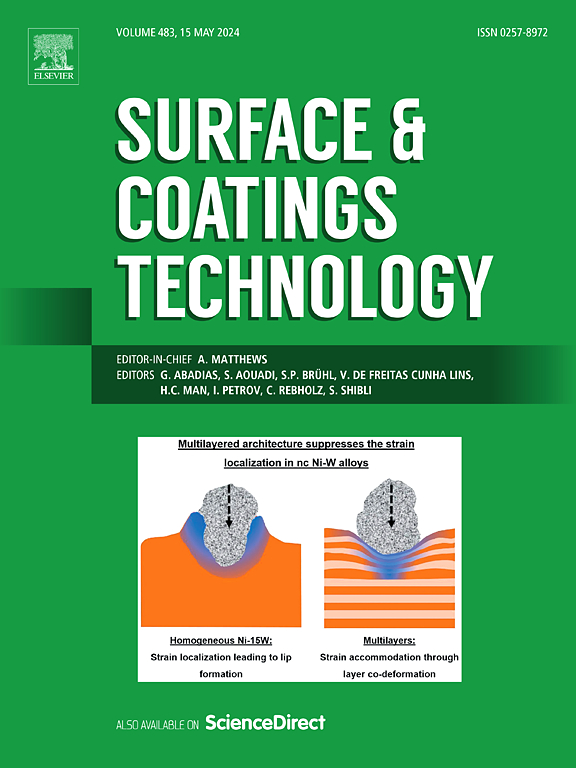Superaerophobic 0D nickel–2D ceria supported 316L for enhanced OER and HER activity
IF 5.3
2区 材料科学
Q1 MATERIALS SCIENCE, COATINGS & FILMS
引用次数: 0
Abstract
Hydrogen evolution reaction (HER) and oxygen evolution reaction (OER) are critical in water splitting electrolysis. Hence, discovery and development of bi-functional electrocatalysts with high efficiency and low-cost of deployment is essential for sustainable energy conversion. These gas involving reactions such as OER, HER, and CO2 reduction with diversified bubble behaviors are essential in energy conversion processes. Therefore, electrode design strategies to achieve superwetting (liquid-solid) could accelerate gas bubble evolution at the electrode-electrolyte interface. In this work, electrodeposition methodology was adopted to fabricate Ni/CeO2 superaerophobic electrodes for bifunctional electrocatalysis. The self-supported nanocomposite electrodes demonstrate superaerophobic wetting and a significant increase in electrocatalytic activity. The Ni/CeO2 electrocatalyst demonstrate excellent OER and HER performance at an overpotential of 335 mV and 310 mV respectively. A lowest Tafel slope of 91.1 mV/dec and 84.6 mV/dec was achieved for OER and HER activity. Furthermore, a 3–5 fold increase in electrochemical surface area is evidenced for Ni/CeO2 compared to nickel and CeO2 catalytic electrodes. The interplay of superwetting, high electrochemical active surface area and oxygen vacancies are determined for enhanced water splitting with good endurance over 24 h measured at 20 mA/cm2. This study could provide additional insights for design and development of low-cost, self-supported high efficient electrocatalyst for water splitting.
求助全文
约1分钟内获得全文
求助全文
来源期刊

Surface & Coatings Technology
工程技术-材料科学:膜
CiteScore
10.00
自引率
11.10%
发文量
921
审稿时长
19 days
期刊介绍:
Surface and Coatings Technology is an international archival journal publishing scientific papers on significant developments in surface and interface engineering to modify and improve the surface properties of materials for protection in demanding contact conditions or aggressive environments, or for enhanced functional performance. Contributions range from original scientific articles concerned with fundamental and applied aspects of research or direct applications of metallic, inorganic, organic and composite coatings, to invited reviews of current technology in specific areas. Papers submitted to this journal are expected to be in line with the following aspects in processes, and properties/performance:
A. Processes: Physical and chemical vapour deposition techniques, thermal and plasma spraying, surface modification by directed energy techniques such as ion, electron and laser beams, thermo-chemical treatment, wet chemical and electrochemical processes such as plating, sol-gel coating, anodization, plasma electrolytic oxidation, etc., but excluding painting.
B. Properties/performance: friction performance, wear resistance (e.g., abrasion, erosion, fretting, etc), corrosion and oxidation resistance, thermal protection, diffusion resistance, hydrophilicity/hydrophobicity, and properties relevant to smart materials behaviour and enhanced multifunctional performance for environmental, energy and medical applications, but excluding device aspects.
 求助内容:
求助内容: 应助结果提醒方式:
应助结果提醒方式:


